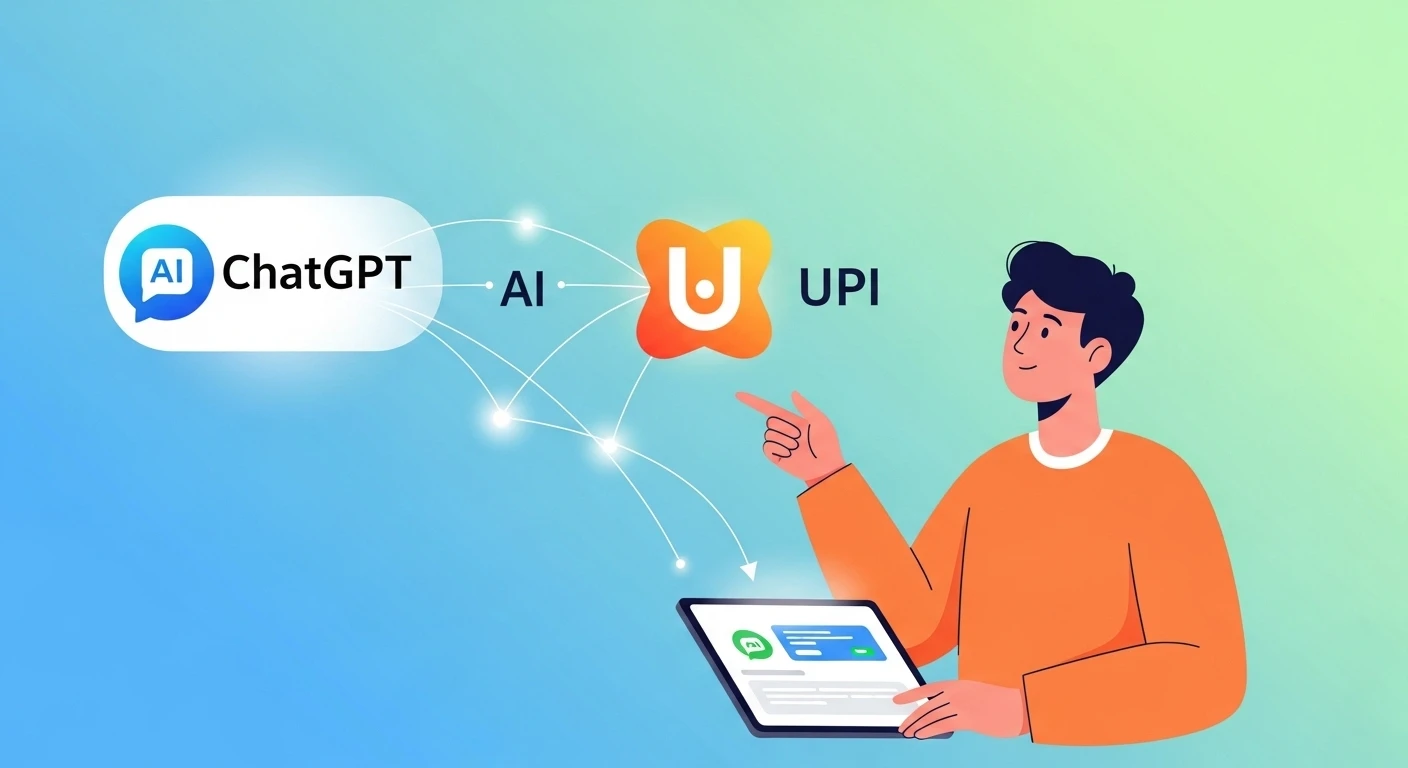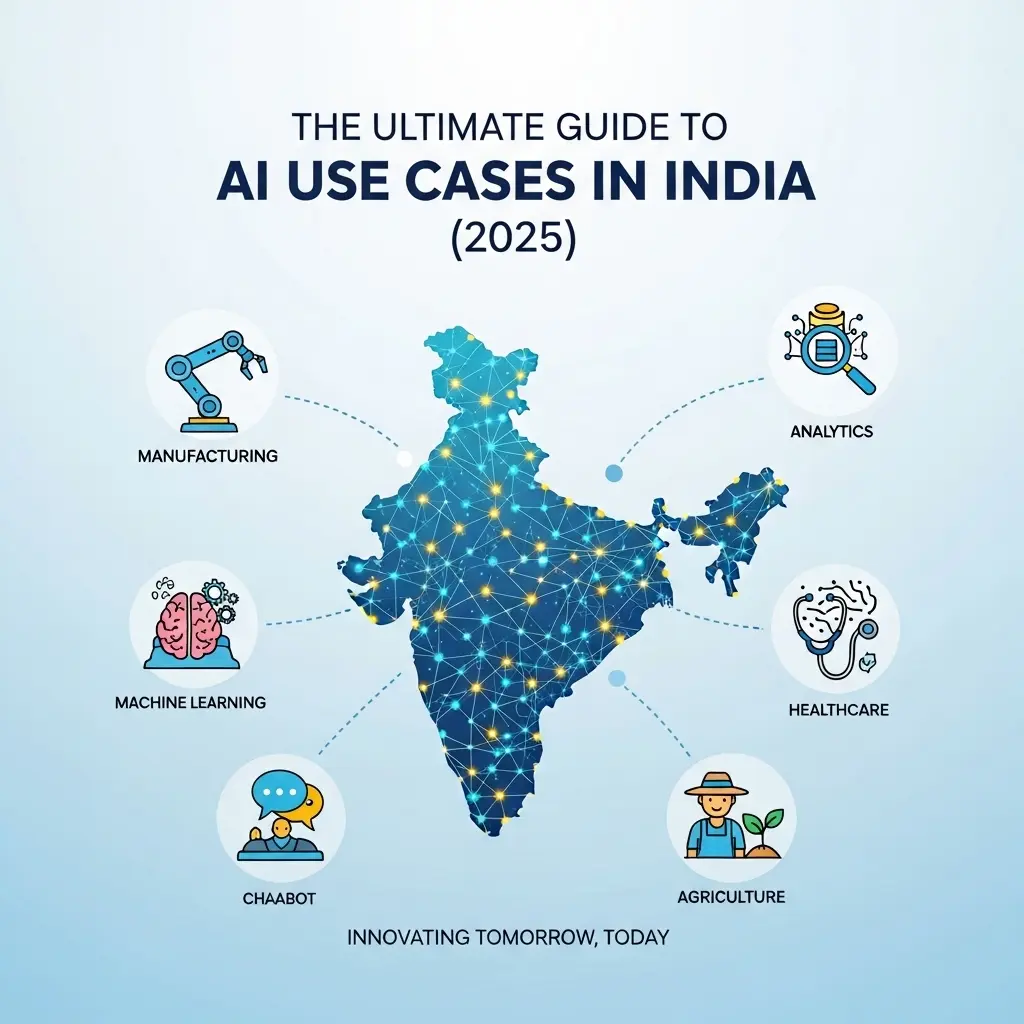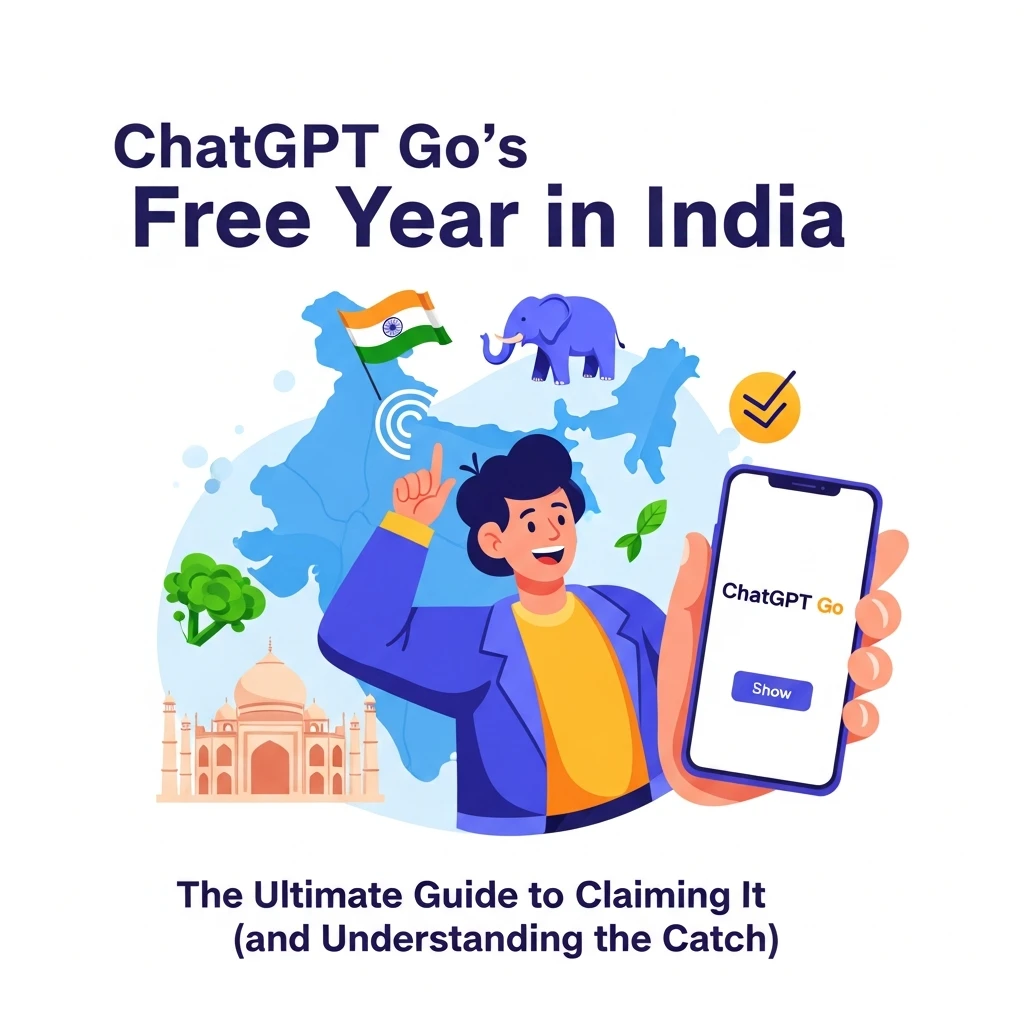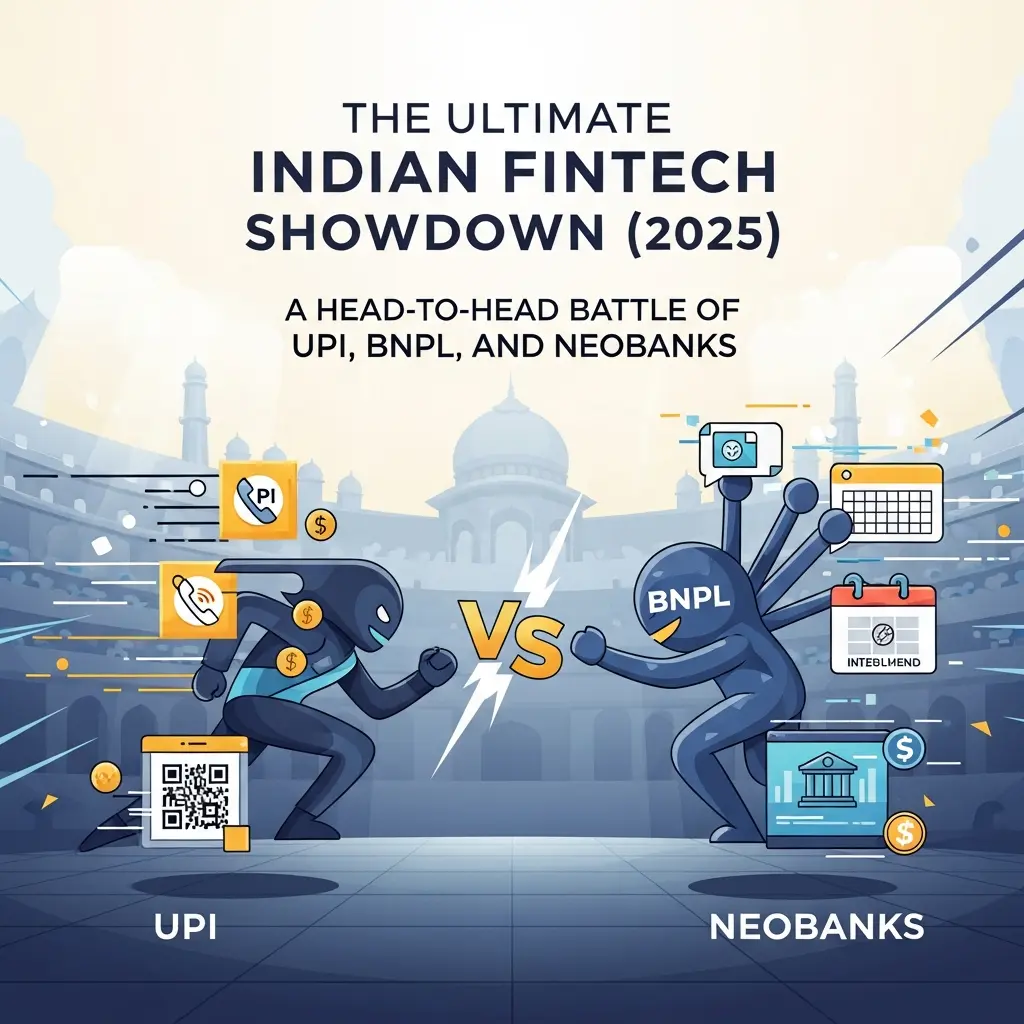UPI on ChatGPT: India's Next Payment Revolution? Everything You Need to Know
By Amandeep Singh
Founder, Cancelmates. Tracking the future of digital commerce.
The future of e-commerce in India arrived quietly, in a chat window. In a landmark collaboration announced in October 2025, India's digital payment backbone, NPCI, fintech leader Razorpay, and AI pioneer OpenAI launched a pilot program to bring UPI payments directly to ChatGPT.
This isn't just about adding a "pay" button to a chatbot. It's the first step toward a new paradigm called "agentic payments," where AI assistants transform from simple discovery tools into autonomous shopping agents that can complete transactions on your behalf. This move could fundamentally change how Indians shop online, blending conversational AI with the nation's world-class UPI infrastructure. But how does it work, and is it truly secure? This is the definitive guide to the pilot that could redefine digital commerce.

Your Guide to UPI on ChatGPT
- 1. What Are "Agentic Payments"? The Shift from Finder to Doer
- 2. How It Works: The Tech Behind the Magic (and the Security)
- 3. The Key Players: Who is Doing What?
- 4. At a Glance: Traditional UPI vs. Agentic UPI
- 5. The Big Questions & Skepticism: Is This Necessary?
- 6. Conclusion: The Future of Conversational Commerce
- 7. Frequently Asked Questions
1. What Are "Agentic Payments"? The Shift from Finder to Doer
Until now, AI like ChatGPT has been a powerful discovery tool. You could ask it to find "ingredients for a Thai curry," but to actually buy them, you had to leave the chat, open a grocery app, search again, and complete the payment manually. This manual step is what developers call the "human-in-the-loop" problem.
Agentic payments solve this. An "agentic AI" is an AI assistant that is authorized to perform multi-step tasks on your behalf with minimal input.
"With Agentic Payments, we are transforming AI assistants from simple discovery tools into full-fledged shopping agents." - Harshil Mathur, CEO & Co-Founder, Razorpay
In this new model, you can ask ChatGPT to order those ingredients from Bigbasket, and the AI can search the catalog, confirm the items with you, and complete the purchase via UPI, all within the same conversation. It moves the AI from being a research assistant to a personal shopping assistant.
2. How It Works: The Tech Behind the Magic (and the Security)
Giving an AI the power to spend your money sounds risky, which is why this pilot is built on new, secure features from NPCI. The system does not give ChatGPT your UPI PIN or password.
It works by combining two new UPI capabilities:
- UPI Circle: This feature allows a user to "add" a trusted entity (in this case, an AI agent) to their UPI circle, giving it permission to initiate payments on their behalf without a PIN for every transaction.
- UPI Reserve Pay: This new function lets you block or "reserve" funds for a specific merchant. The money is only deducted once you confirm the final purchase, adding a crucial layer of user control and preventing accidental payments.
Essentially, you pre-authorize the AI agent to shop for you within set limits, and the final transaction is still securely authenticated through your existing UPI app, keeping your sensitive PIN completely private.
3. The Key Players: Who is Doing What?
This ambitious pilot is a collaboration between leaders in AI, payments, and e-commerce.
NPCI
Provides the secure, bank-grade UPI infrastructure and new features like UPI Circle and Reserve Pay.
Razorpay
Builds the payment stack that connects the AI to the UPI network, creating the seamless checkout experience.
OpenAI
Provides the advanced conversational intelligence through its ChatGPT platform.
Pilot Partners
Bigbasket acts as the first e-commerce merchant, while Axis Bank and Airtel Payments Bank serve as the banking partners.
4. At a Glance: Traditional UPI vs. Agentic UPI
| Action | Traditional UPI Journey | Agentic UPI via ChatGPT |
|---|---|---|
| Discovery | Search on Google or an e-commerce app. | Ask ChatGPT in natural language. |
| Checkout | Switch to the merchant app, add to cart, proceed to checkout. | Confirm items directly in the chat. No app switching. |
| Payment | Select UPI, enter ID, switch to UPI app, enter PIN, switch back. | AI initiates payment, user approves via a single notification. |
| Friction | High. Multiple apps, context switches, and manual steps. | Low. A single, seamless conversational flow. |
5. The Big Questions & Skepticism: Is This Necessary?
While the technology is impressive, the announcement has been met with a mix of excitement and skepticism online. Many users are asking a simple question: "But why?"
- Is It a Solution Looking for a Problem? Many argue that existing e-commerce checkout flows are already fast and efficient. The real-world need for an AI to make payments is still being debated.
- Security and Fraud Concerns: While the UPI PIN is secure, a new system opens potential avenues for sophisticated social engineering or fraud. Robust detection and user control will be paramount.
- Dependence on Foreign LLMs: Some critics argue that integrating India's core payment infrastructure with a US-based LLM like OpenAI's could create long-term dependencies, suggesting an indigenous LLM should have been prioritized.
- The Risk of AI "Hallucinations": What happens if the AI misunderstands a request and orders the wrong product or quantity? The "user-controlled" aspect of the pilot will be critical to addressing this.
6. Conclusion: The Future of Conversational Commerce
The UPI-on-ChatGPT pilot is more than just a new feature; it's a bold experiment that sits at the intersection of two powerful technological forces: India's real-time payment revolution and the global rise of generative AI. It's a glimpse into a future of conversational commerce, where transactions are as simple as having a conversation.
While valid questions about necessity and security remain, this pilot reinforces India's position as a global leader in digital payment innovation. The success of this experiment could pave the way for a new ecosystem where AI agents become integral to our daily financial lives, making commerce more intuitive, intelligent, and seamless than ever before.
7. Frequently Asked Questions
Q: Is it safe? Does ChatGPT get access to my UPI PIN?
A: Yes, it is designed to be safe. ChatGPT does not get access to your UPI PIN or any other sensitive banking passwords. The system uses new UPI features like Reserve Pay, and the final transaction is authenticated securely through your registered banking app, just like a normal UPI payment.
Q: When can I use this feature?
A: The feature is currently in a private pilot phase, limited to select users and partners like Bigbasket. There is no official date for a wider public rollout. The companies will first assess the pilot's performance, security, and user experience.
Q: Which e-commerce platforms and banks are part of the pilot?
A: Tata-owned Bigbasket is one of the first e-commerce merchants. The banking partners for the pilot are Axis Bank and Airtel Payments Bank.
Q: Does this mean I can only shop at Bigbasket via ChatGPT?
A: For the initial pilot, yes. However, the goal is to evaluate how this technology can be expanded across many other verticals and e-commerce platforms in the future if the pilot is successful.
Q: Why use AI for payments? Isn't the current UPI system good enough?
A: This is the most common question. The goal isn't to replace the current UPI system but to change the *starting point* of a transaction. The current system is excellent once you are in a checkout flow. However, this pilot aims to create a seamless journey that starts with a simple conversation. It's designed to remove the friction of switching between apps—from a research app (like Google or a chatbot) to a shopping app, and finally to a payment app. The vision is a single, uninterrupted conversational flow from discovery to purchase.
Q: What is the actual problem this AI payment system is trying to solve?
A: It's designed to solve the "human-in-the-loop" problem in an AI-native world. Right now, AI can help you find a product, but a human must manually intervene to complete the purchase. Agentic AI aims to bridge that gap. The problem it solves is the context switch. For example, instead of asking ChatGPT for a recipe and then separately opening Bigbasket to buy the ingredients, you can do it all in one continuous action. It turns the AI from a simple "finder" into an actual "doer" or a personal shopping assistant.
Q: Which specific AI is being used? Is it just ChatGPT, and are there others?
A: The current pilot specifically uses OpenAI's models, which power ChatGPT. This is the core AI providing the conversational intelligence. It's important to note that this is part of a broader trend. NPCI also announced its own AI-based initiative called UPI HELP, which is powered by its own Small Language Model (SLM). While the OpenAI partnership is the first major e-commerce pilot, it signals a larger movement towards integrating various AI models into India's digital payment ecosystem.


